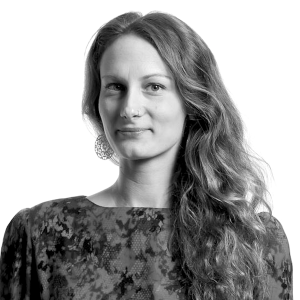
Designing Beyond the Human Experience
In a Harvard Business Review article titled, “Why Social Ventures Need Systems Thinking,” the authors argue that in order for solutions to be implemented—to actually work—they have to be elegantly embedded into larger ecosystems, such as a school district or a corporate structure. Similarly, many of the challenges we tackle at frog, like clean energy consumption or efficient transportation, require us to think broadly about the systems we are designing around. As a strategist, when I consider ecosystem design I am not only thinking about a family of products or a business unit within a company; I am thinking about how the products and services we create impact our communities and our environment.
I had the opportunity to leverage this way of thinking on a recent trip to Brazil, as a participant in an International Development Design Summit (IDDS). International Development Design Summits were born out of MIT’s D-Lab as an way for interdisciplinary teams to work with communities on low-cost solutions, tackling a social issue like education or health. Participatory design is at the core of the IDDS ethos, which means that teams work with communities to design solutions together, rather than designing for them. Designing in this way enables solutions to be immediately actionable, yet sustainable over the long term, because they are true to the community’s way of life.
The summit I attended in Brazil was focused on environmental sustainability via permaculture—a holistic approach to designing efficient natural ecosystems. Marrying participatory design and permaculture, we were constantly asking ourselves, “Does this solution work for the community? Does this solution make sense for the environment? Could it even be regenerative?” We studied both behavioral patterns and natural patterns, like river tides, to inform our thinking; an understanding of symbiotic relationships was central to our work.
Photo courtesy of Diego Dallas Martins.
Photo courtesy of Diego Dalmaso Martins
I saw examples of symbiotic relationships firsthand in the town of Boa Vista, where I spent many days of the two-week program hopping from log to log along a verdant path that led to my team member’s river front home. To get there, we meandered through the rainforest, enveloped by 40 foot açaí and cacao trees, often stopping to pick cacao fruit. One afternoon, a team member and local resident named Max was leading the way along our familiar tree lined path when he bent over and placed a tarantula on his shoulder. I looked on with wide eyes; why was Max unafraid of this venomous spider, as I was? He explained that, having grown up in this environment, he understood the tarantula’s behaviors and knew how it would behave if it felt threatened. Because of this understanding, he lives in harmony with these creatures in the Amazon. Day after day, I observed the deep respect that the Boa Vista community showed for the natural environment that they share with the countless organisms that call the rainforest home.
By working with this community, I was challenged to design beyond the human experience. For example, when considering solutions for an aquaculture project, we had to ask ourselves, “Would the fish feel happy in this environment?” Admittedly, it felt silly to think this way at first, but I soon learned that this question had broader implications. If the fish were happy in the pond that we built, we would spend less energy and fewer resources trying to keep them there. We had to create a pond that included elements that fish naturally gravitate towards, like plant life and multiple depths. I realized that I had been thinking about my relationship with the natural world as if I were outside of it. I had to reframe my thinking; I was not working with nature, I am a part of nature. As an extension, we as humans are an element of a greater natural ecosystem and we must design for it holistically.
What does success look like if we design holistically? As part of our permaculture curriculum, we studied multiple dimensions of value, shown in the chart below. Value is created beyond the bottom line; there is also social, material, living, intellectual, experiential, spiritual, and cultural value. By designing for multiple value types, we create richer, more sustainable solutions—not just for one organization, but for our society at large.
As I continue to evolve my craft as a systems thinker and ecosystem designer, I have made a promise to myself: to consider human patterns and their impact on both social and natural environments, and to design solutions across multiple value types that are additive to the bottom line, as well as our natural environment and our collective experience on our planet.
eight_forms_of_currency_updated

Agnes is a Senior Strategist at frog San Francisco. Fascinated by human behavior, large ecosystems and inspired by principles within nature, Agnes works with clients to build businesses that foster a respect for the customer, community and the planet.
We respect your privacy
We use Cookies to improve your experience on our website. They help us to improve site performance, present you relevant advertising and enable you to share content in social media. You may accept all Cookies, or choose to manage them individually. You can change your settings at any time by clicking Cookie Settings available in the footer of every page. For more information related to the Cookies, please visit our Cookie Policy.